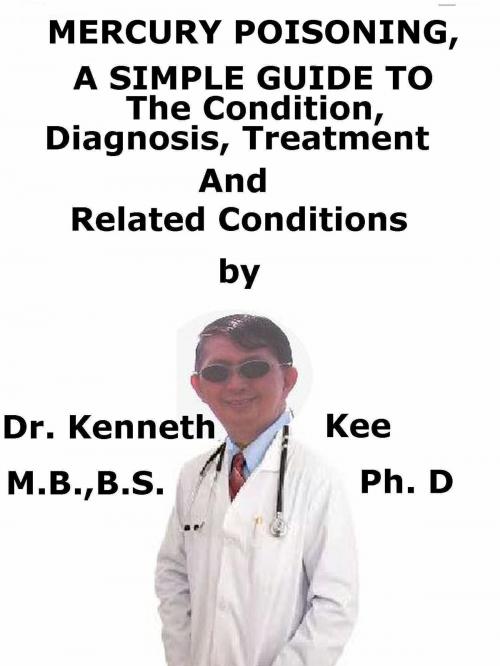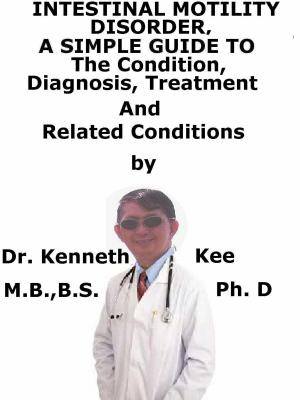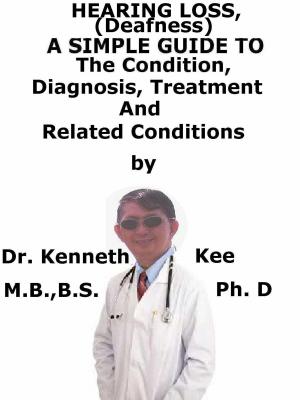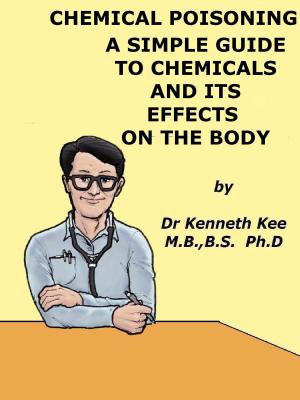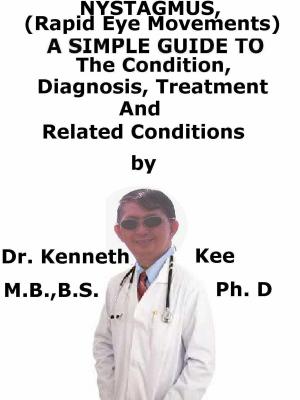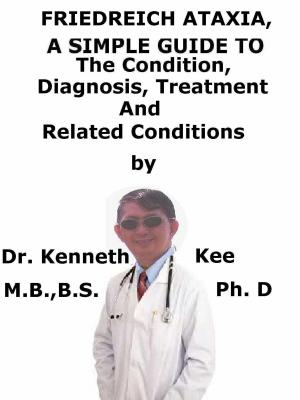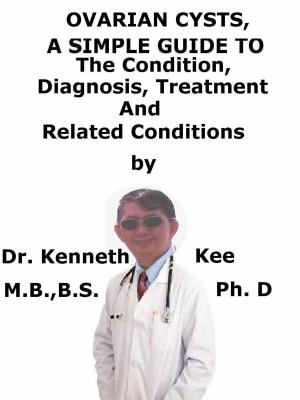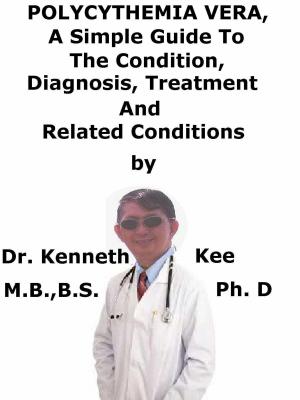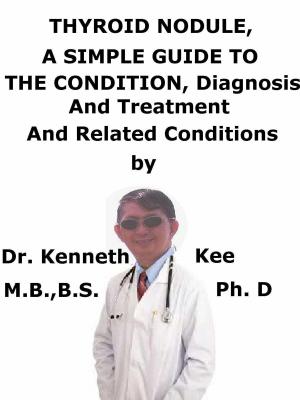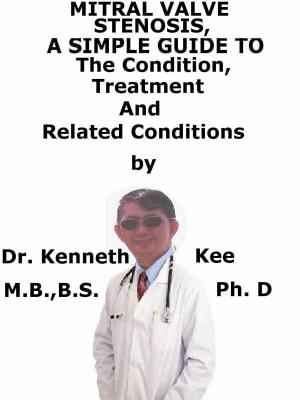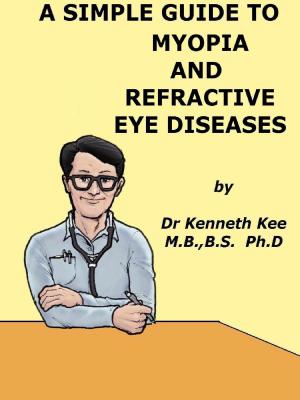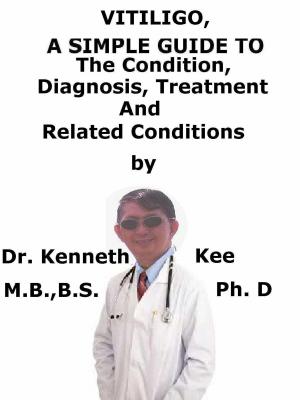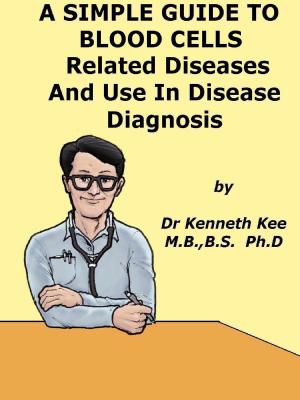Mercury Poisoning, A Simple Guide To The Condition, Diagnosis, Treatment And Related Conditions
Nonfiction, Health & Well Being, Medical, Specialties, Toxicology, Science & Nature, Science, Chemistry| Author: | Kenneth Kee | ISBN: | 9781370950591 |
| Publisher: | Kenneth Kee | Publication: | December 7, 2016 |
| Imprint: | Smashwords Edition | Language: | English |
| Author: | Kenneth Kee |
| ISBN: | 9781370950591 |
| Publisher: | Kenneth Kee |
| Publication: | December 7, 2016 |
| Imprint: | Smashwords Edition |
| Language: | English |
Mercury poisoning is a medical disorder induced by exposure to mercury or its compounds.
The consumption of fish is by far the most important source of ingestion-linked mercury exposure in humans and animals.
Plants and livestock also have mercury due to bio-concentration of mercury from seawater, freshwater, marine and sediments, soils, and atmosphere.
Mercury is a geologically occurring element that is present in air, water and soil.
It appears in several types:
1. Elemental or metallic mercury,
2. Inorganic mercury compounds, and
3. Organic mercury compounds.
Mercury is an element present in many rocks including coal in the earth's crust.
It has conventionally been used to make products like thermometers, switches, and light bulbs.
Humans cannot produce or destroy mercury.
Pure mercury is a liquid metal, occasionally known as quicksilver that volatizes readily.
When coal is incinerated, mercury is freed into the atmosphere.
Burning dangerous wastes, producing chlorine, breaking mercury products, and spilling mercury, and the inappropriate treatment and removal of products or wastes having mercury, can also release it into the environment.
Mercury in the air ultimately settles into water or on land where it can be washed into water.
Once in the water, certain microorganisms can alter it into methylmercury, a highly toxic form that accumulates in fish, shellfish and animals that eat fish.
Fish and shellfish are the main causes of methylmercury exposure to humans.
Mercury exposure at high levels can injure the brain, heart, kidneys, lungs, and immune system of people of all ages.
Nearly all people have at least trace amounts of methylmercury in their tissues, indicating methylmercury's prevalent presence in the environment and people's exposure through the eating of fish and shellfish.
Dental Amalgam can free small quantities of mercury vapor over time, and patients can take in these vapors by inhaling or ingesting them.
Symptoms of methylmercury poisoning may be:
1. Reduction of peripheral vision;
2. Disturbances in sensations ("pins and needles" feelings);
3. Lack of coordination;
4. Impairment of speech,
5. Walking; and
6. Muscle weakness
Symptoms of metallic mercury poisoning are:
1. Tremors,
2. Emotional changes,
3. Insomnia,
4. Neuromuscular changes
Mercury poisoning is diagnosed by Blood and urine tests for mercury
Methylmercury poisoning injuries to the body cannot be reversed.
Treatment will depend on how severe a person's condition is.
The person should be moved away from the source of exposure to methylmercury.
Treatment may involve:
1. Activated charcoal by mouth or tube through the nose into the stomach, if mercury is swallowed
2. Breathing support, including oxygen, tube through the mouth into the throat, and breathing machine
3. Dialysis (kidney machine)
4. Fluids through a vein (by IV)
5. Medicine to treat symptoms
TABLE OF CONTENT
Introduction
Chapter 1 Mercury Poisoning
Chapter 2 Causes
Chapter 3 Symptoms
Chapter 4 Diagnosis
Chapter 5 Treatment
Chapter 6 Prognosis
Chapter 7 Aluminum Toxicity
Chapter 8 Lead Poisoning
Epilogue
Mercury poisoning is a medical disorder induced by exposure to mercury or its compounds.
The consumption of fish is by far the most important source of ingestion-linked mercury exposure in humans and animals.
Plants and livestock also have mercury due to bio-concentration of mercury from seawater, freshwater, marine and sediments, soils, and atmosphere.
Mercury is a geologically occurring element that is present in air, water and soil.
It appears in several types:
1. Elemental or metallic mercury,
2. Inorganic mercury compounds, and
3. Organic mercury compounds.
Mercury is an element present in many rocks including coal in the earth's crust.
It has conventionally been used to make products like thermometers, switches, and light bulbs.
Humans cannot produce or destroy mercury.
Pure mercury is a liquid metal, occasionally known as quicksilver that volatizes readily.
When coal is incinerated, mercury is freed into the atmosphere.
Burning dangerous wastes, producing chlorine, breaking mercury products, and spilling mercury, and the inappropriate treatment and removal of products or wastes having mercury, can also release it into the environment.
Mercury in the air ultimately settles into water or on land where it can be washed into water.
Once in the water, certain microorganisms can alter it into methylmercury, a highly toxic form that accumulates in fish, shellfish and animals that eat fish.
Fish and shellfish are the main causes of methylmercury exposure to humans.
Mercury exposure at high levels can injure the brain, heart, kidneys, lungs, and immune system of people of all ages.
Nearly all people have at least trace amounts of methylmercury in their tissues, indicating methylmercury's prevalent presence in the environment and people's exposure through the eating of fish and shellfish.
Dental Amalgam can free small quantities of mercury vapor over time, and patients can take in these vapors by inhaling or ingesting them.
Symptoms of methylmercury poisoning may be:
1. Reduction of peripheral vision;
2. Disturbances in sensations ("pins and needles" feelings);
3. Lack of coordination;
4. Impairment of speech,
5. Walking; and
6. Muscle weakness
Symptoms of metallic mercury poisoning are:
1. Tremors,
2. Emotional changes,
3. Insomnia,
4. Neuromuscular changes
Mercury poisoning is diagnosed by Blood and urine tests for mercury
Methylmercury poisoning injuries to the body cannot be reversed.
Treatment will depend on how severe a person's condition is.
The person should be moved away from the source of exposure to methylmercury.
Treatment may involve:
1. Activated charcoal by mouth or tube through the nose into the stomach, if mercury is swallowed
2. Breathing support, including oxygen, tube through the mouth into the throat, and breathing machine
3. Dialysis (kidney machine)
4. Fluids through a vein (by IV)
5. Medicine to treat symptoms
TABLE OF CONTENT
Introduction
Chapter 1 Mercury Poisoning
Chapter 2 Causes
Chapter 3 Symptoms
Chapter 4 Diagnosis
Chapter 5 Treatment
Chapter 6 Prognosis
Chapter 7 Aluminum Toxicity
Chapter 8 Lead Poisoning
Epilogue
